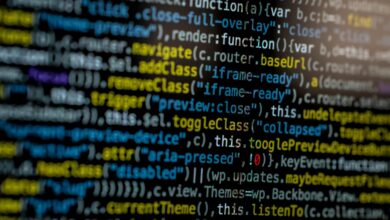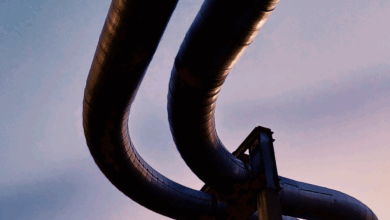
Tracing back more than a century, modern Artificial Intelligence (AI) has had a fascinating journey, with many critical inflection points along the way.
For public perception, perhaps none were more pivotal than when ChatGPT burst onto the scene in late 2022. An unexpected side-effect of ChatGPT’s rapid adoption was that it shone a spotlight on a global issue that has been brewing for more than a decade: Our global power grids are woefully underequipped to deal with an explosion of energy demand.
AI’s Energy Dilemma: Friend or Foe?
Our aging, analog grids are fast becoming bottlenecks for the development of new AI data centers, while also slowing collective efforts to incorporate more renewable energy sources and to electrify society at large.
Against this backdrop, AI has been cast as a power-hungry villain in a story of global energy demands and power grid stress. And it’s not an entirely unfair characterization: Data centers consumed approximately 1.5% of the world’s electricity in 2024, and that figure is projected to double by 2030, driven largely by AI workloads.
A Two-Way Relationship: AI as Energy Enabler
But this narrative misses a critical truth: AI’s relationship with energy is not one-sided.
Yes, AI consumes energy, but it’s also one of our most powerful tools for producing, distributing, and managing it more intelligently.
A Complex Challenge Requires Intelligent Tools
Our power grids are incredibly complex, with more than half a million miles of high voltage lines spanning the United States alone. Managing them manually is an impossible task, especially when we consider that the complexity is only increasing with the rapid adoption of distributed energy resources, like solar panels. As the complexity and size of our grids continue to grow, we need to equip grid planners and operators with new tools – and most critically, new forms of knowledge – to effectively do their jobs.
Decades of Optimization – But Still Falling Short
We’ve used algorithms to optimize power grid operations for decades. Simulating power flows, forecasting demand, and many other use cases leverage mature and reliable technologies and products.
And yet, we need to do better: We estimate that 99% of the power grid is un-monitored, optimization techniques are notoriously slow, new connections to the grid take years, and much of existing grid capacity is underutilized thanks to overly conservative operational limits. While not a silver bullet on its own, AI has a crucial role to play in addressing all these challenges.
Grid-Enhancing Technologies (GETs): AI’s Tactical Advantage
Perhaps the fastest and most cost-efficient way to increase grid capacity comes in the form of grid-enhancing technologies (GETs). When deployed on existing grid infrastructure, a combination of hardware and software can be used to increase grid capacity, reliability, and resilience.
Faster, Cheaper, Smarter Deployment
A key benefit of GETs is that they can be deployed much faster than new grid capacity can come online. Adding capacity with new lines and energy sources, such as photovoltaic power stations, can take years. These processes are muddied by slow approval processes, the bureaucracy of major capital expenditure (capex), and ratepayer opposition. From 2013 to 2020, transmission lines have expanded at only about 1% per year. In contrast, GETs can be deployed and start generating value in months, with relatively low capex and little to no outside pushback.
Artificial intelligence is a key ingredient in modern GETs. For example, Heimdall Power develops algorithms that take data from our proprietary power line-based sensor, the Neuron (which has been dubbed the “magic ball” by media), to determine the real-time capacity of a power line. This capability is called dynamic line rating (DLR), and it enables utilities to unlock an average of 40% more transmission capacity, both in real-time and up to ten days into the future with smarter capacity forecasts.
Smart Sensors and Smarter Models
The same sensors can be used to train models that detect issues like galloping lines, faults, and fires, based on accurate, ground truth data. Training models on ground truth data is crucial: Because we deal with time series data, as well as data that represents information flowing through networks, we have two sources for compounding errors. This means that even small errors in assumptions early-on can lead to catastrophic deterioration in an algorithms’ performance over time.
As we look ahead, opportunities to compound the value of AI and energy abound.
Reinventing Optimization with Next-Gen AI
Take power flow optimization, for example, which is a common task most utilities manage today. For any given network of power lines, substations, and other components, a utility needs to identify an optimal configuration. This is a difficult, non-linear task, and today’s solutions rely on computationally heavy, linear solvers. Calculations are time consuming (far too time consuming to serve real-time use cases), and running multiple simulations to find truly optimal configurations is typically not possible.
Enter AI. Emerging approaches leverage reinforcement learning, differentiable simulators, and other approaches that promise to drastically increase performance and simulation speed.
Unlocking New Possibilities
This speed and intelligence doesn’t just improve today’s use cases – it unlocks entirely new applications.
For instance, if a grid planner could quickly and concurrently run multiple power flow optimization cycles, they could rapidly test countless scenarios for connecting new capacity (like a wind farm) considering various real-time, dynamic network configurations.
Beyond the Buzz: Choosing the Right AI
It is important to highlight that AI is more than just large language models (LLMs). While it is tempting to throw the latest technologies at a problem, we must carefully consider which AI approaches – if any – will not only produce desired outcomes, but build users’ trust, ensure data privacy and security, and much more. Careful consideration might entail choosing models with outputs that can more readily be analyzed, or prioritizing approaches that leverage the temporal and networked nature of the data in the energy sector. For example, new research suggests that Graph Reinforcement Learning could be particularly promising when applied in the energy industry’s collection of nodes (e.g. power stations) and edges (power lines).
Building AI That the Grid Can Trust
Being deliberate in the deployment of AI-based solutions is especially important in industries that deal with critical infrastructure and highly sensitive data. Human-in-the-loop solutions are a key path to successful adoption and to ensuring basic performance requirements. And finally, we need rigorous testing, strong governance frameworks, and a common language tailored to utilities and regulators.
When we apply AI directly to power grids with a blend of software and sensors, we activate a flywheel: AI that enables energy resilience, and energy that fuels AI innovation. This positive feedback loop turns a constraint into a catalyst.
From Bottleneck to Launchpad
In this vision, the goal isn’t to limit AI’s energy use: It’s to unlock more energy through AI, and more AI through abundant energy. Because the grid shouldn’t be a bottleneck; it should be AI’s launchpad.





